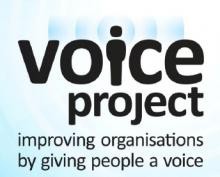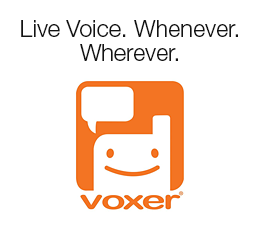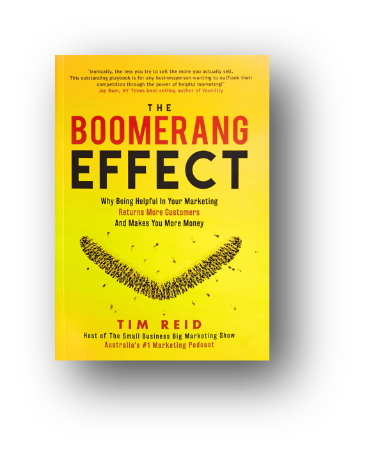As a business owner, pulling a website together probably isn’t in your primary skill set.
Yet, the reality is, you are who Google says you are, and having a website means your business will be indexed and ranked by the biggest search engine in the world.
Having a great website (and yes, it is possible, even on a modest budget) means you could rank on page 1 of Google.
So (in no particular order), to make this important and daunting process easy, here’s 10 website tips for small businesses:
1. Include multi-media
Some people like to read, others like to listen and some like to watch. So use a variety of mediums to present information on your website. These could include videos, audio files (podcasts ;0), infographics, charts, and text.
2. Have a personalised About Us page
I’m amazed at how many business owners don’t introduce themselves and their staff. Afterall, people buy from people. So include photos or videos of each staff member (with their input, of course) and bring them to life as people – of course, say what they do at work, but also include fun stuff like what was their first car, their favourite movie and so on.
3. Ensure your website is responsive
This means that it automatically re-sizes the content depending on the size of the screen it’s being viewed upon. There’s nothing more annoying than checking out say a cafe’s website when you’re on the road to find that it’s not readable. With Google’s recent update on April 21, 2015, they’re now punishing websites that aren’t responsive with poorer rankings. Good-bye page one if you’re website’s not responsive 🙁
4. Be contactable
If you want people to contact you, then place your contact details clearly on every page. I suggest in the header that runs across every page of your website. That way, no matter what page someone is on, all your details are there, ready for someone to make contact.
5. Use WordPress
Word what? WordPress. It’s an easy to use content management system that makes it easy for you to add information on an ongoing basis. Plus there is no shortage of people around the world who can work in it. My show sponsor, Netregistry, build most of their clients’ websites in WordPress.
6. Have a simple Navigation bar
There’s no need to overload the bar that sits along the top of your website. For most businesses, these five buttons will suffice to start with – Home, About Us, Products / Services, Blog, Contact. Yes, you could add more, but this structure is a good place to start.
7. Have a blog
Blogs are not only a great way to share up-to-date information with your customers, but adding a new blog post once or twice a month means that your website is being updated regularly. And Google love this. It takes it from being a static brochure, to something more interesting that gives people a reason to come back and visit (and share) often.
8. Ensure it loads quickly
Do you patiently wait for a website to load? Probs not! We’re an impatient lot. So be sure to use a reputable website hosting company that has servers running at the speed of sound. Well, almost 😉
9. Complete your metadata
OK, this is as geeky as I’ll get on you. But here’s the thing … Google don’t see your website, they see and try to index each and every page of your website. So, in order for them to know what each page is about you need to provide some simple information in the form of a Page Title and Meta Description. I use a free WordPress SEO plugin called Yoast to do this. Use keywords that best describe the information on that page to improve your chances of ranking well when people search for those keywords. Here’s the metadata for this actual post:
10. Capture peoples’ email
On the premise that your website isn’t being visited every hour of the day by the same people, then it makes sense to capture visitors’ email address in exchange for a free giveaway like a free report, a video that solves a key problem they have, or an eBook. This allows you to build a list and communicate with them on a regular basis. Near the top of this page I give away my 10 Marketing Wake-Up Calls in exchange for an email address.
So, there’s 10 website tips for small businesses to follow. There’s plenty more, but let’s not overcomplicate things. I chose these as they’re easy to implement and should allow you to see some quick improvements when you activate them. And if you’re keen to get your website sorted, then contact Netregistry.
What’s one thing you’ve implemented on your website that’s given you a great result?














 Grab My 10 Marketing
Grab My 10 Marketing

9 thoughts on “Top 10 Website Tips For Small Businesses. #3 Is Non-Negotiable.”
Gold as usual, Timbo! Tip #3 is especially relevant to me today as I am trying to convince a website owner that even though he doesn’t personally like mobile sites, the rest of the world does!!
(pssstt – slight typo in the title of #6 mate.)
Interesting. Direct them here. Tell ’em it’s non-negotiable! Then tell them that the Big G wont take no for an answer. Plus too many business owners think about themselves, and not their customers. Well, the not so smart ones, anyway 😉 Thanks for feeding back, Greg.
Re the nav bar – I read somewhere to have a max of seven sections on the nav bar, which is a bit like asking me to choose my favourite child…prob a good way to combat my preciousness here (“What? You mean everyone is NOT desperately reading every word and watching every video on my site!?!”) is to go to some new sites and experience their navbars
Seven? Seven?! You may as well write a book, Harriet. It would be shorter ;0) Brevity is marketing gold, I believe. In copy, and in even in nav bars. I try to practice it in my podcast. Rarely succeed 🙁
Funny (business) you should say that Tim as I’ve actually got 4 on Amazon. I just re listened to episode 95 where Griffo talks about the book being not about sales but increasing authority and opportunities for speaking etc. One of my books has already made me thousands in the form of a long term client …. So I need to start taking some of the advice in that episode and market them more. I think implementation is the biggest challenge we small business owners face today…anyway I’ve joined the forum specifically to set some specific goals (like get the books put into print) and make myself accountable
What was it you were saying about brevity!?!
Griffo also refers to one’s book as being a glorified business card. I like that. Now, in terms of getting sh** done, I suggest you have a listen to episodes 254 & 255, just not before bed. They’ll motivate you to getting a team to help you, without breaking the bank 🙂
Cheers mate 🙂
responsive websites are on the out- why- because google is now also penalising a website for taking too long to load on mobiles- – if you are using wordpress for example there are theme switchers for mobile so you can create a mobile version and a desktop version- sure it takes a bit more time but you don’t get a penalty from google. responsive simply takes your desktop site and changes the menu and moves things around so they fit on a smaller screen- but images and autoplay videos still take time to load.
Yost SEO takes a huge chunk of your wordpress processors, I had it running and my website was loading slowly- turned it off and super fast loading so it’s off and I am still at the top of google- I recommend installing it- and going through and setting the pages and if you run into problems with loading times- turn it off- you lose a tiny bit of the backend SEO but all the pages will remain the same content filled pages with the right amount of keywords in the mix